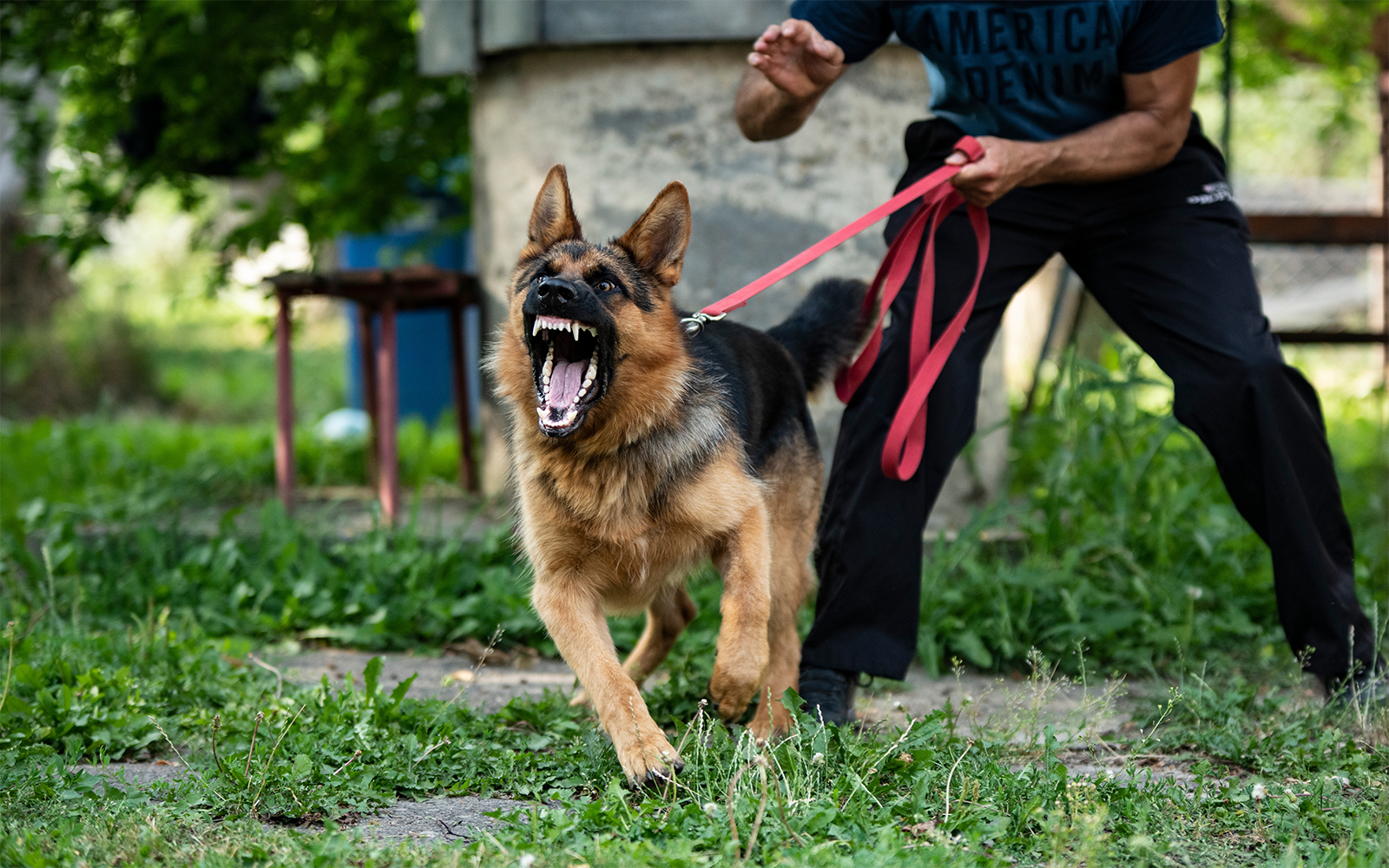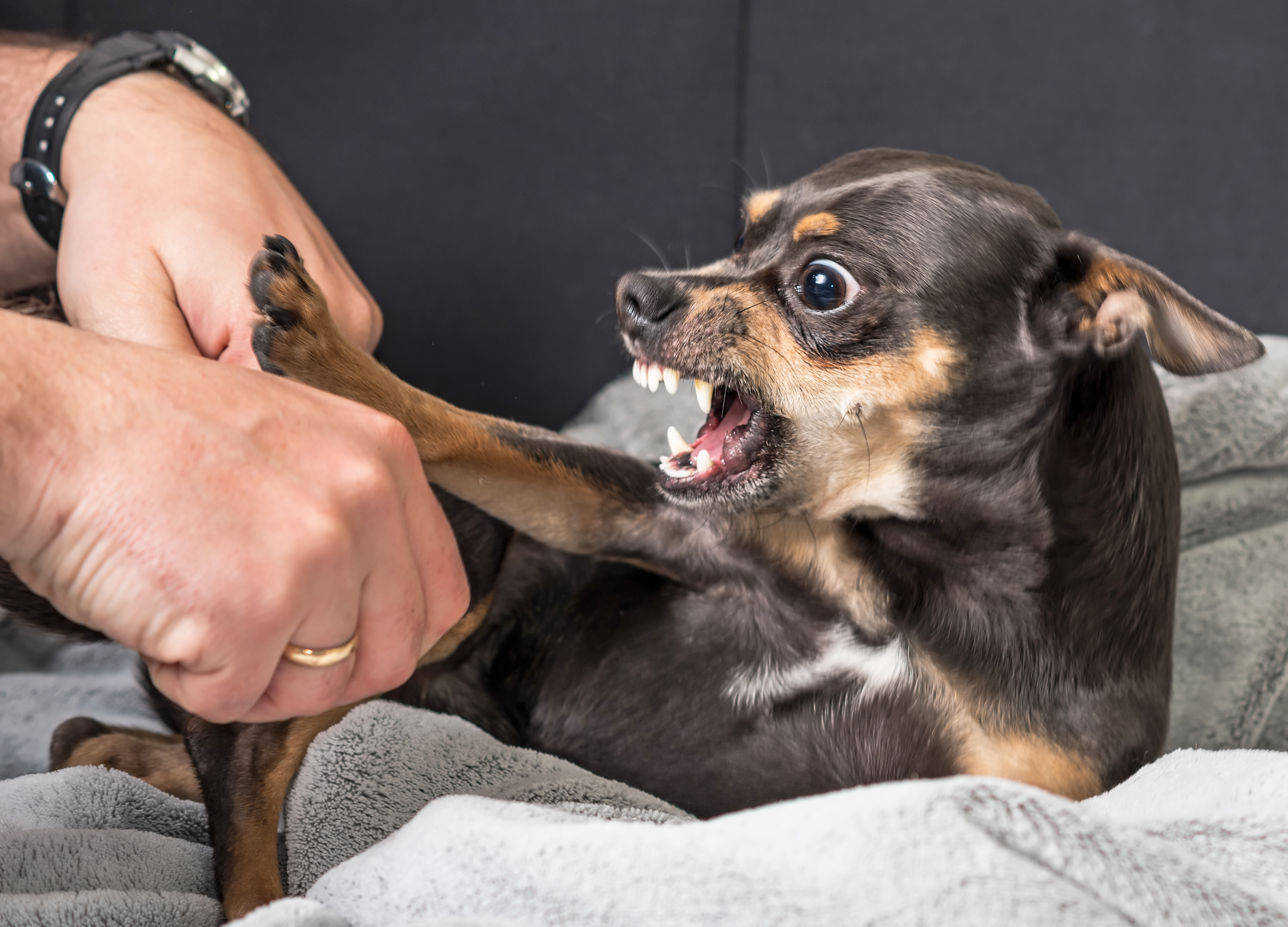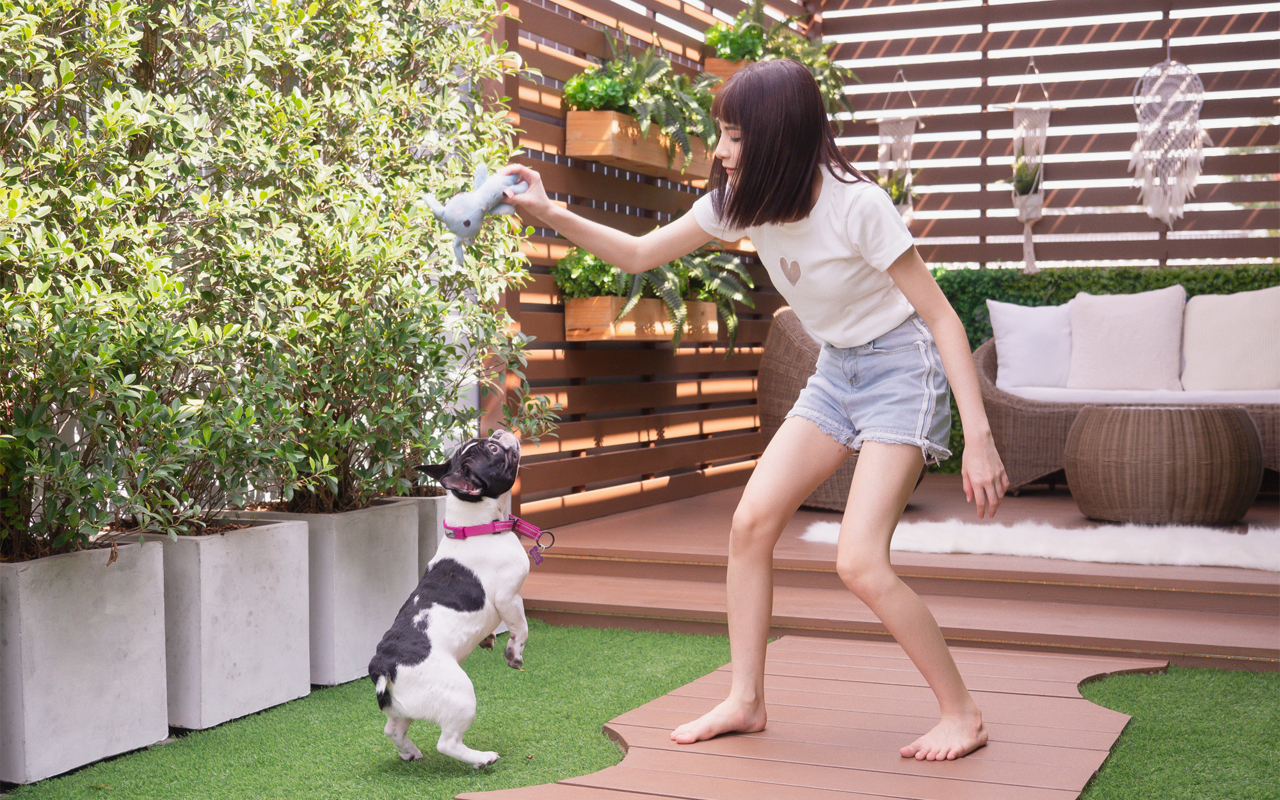
Canine aggression is a complex issue. It can be caused by several factors and can be directed at people, other animals, or both. To understand why dogs are aggressive and how to manage them, it is important to learn about the different types of aggression.
Recognizing Signs of Aggression
Knowing how to identify signs of aggression in dogs is part of being a responsible pet owner and ensuring the safety of others. Here are some common signs of aggression in dogs.
Growling
Barking
Displaying teeth
Exhibiting a stiff body posture
Direct staring
Forwarding ears
Chasing
Snapping
Biting

Common Triggers for Aggression
Fear: Dogs may exhibit aggression when they feel threatened or fearful, reacting defensively to perceived dangers.
Pain: Dogs can become aggressive when they are experiencing physical discomfort, instinctively safeguarding themselves from potential sources of pain.
Possessiveness: Dogs may demonstrate aggression when guarding their food or possessions, including exhibiting possessive tendencies toward their owners if they sense a threat to their attention.
Genetics: Some dogs are born with a tendency to be anxious. This can make them more likely to be aggressive. However, even if a dog is born with this tendency, it does not mean they will be aggressive. There are other factors that can influence a dog's behaviour, such as their environment and training.

Handling Aggressive Dogs
Dealing with an aggressive dog demands a cautious and methodical approach to ensure the safety of both the handler and others. Here are some essential steps to effectively manage an aggressive dog:
Maintain Composure: Avoid sudden movements and loud noises, as running can trigger a dog's instinct to chase. Stand still with arms at your sides. Even if the dog approaches, remain still and composed.
Avoid Direct Eye Contact: Direct eye contact can be interpreted as confrontational or challenging by dogs. Aggressive dogs may perceive it as a threat, provoking aggressive responses. Dogs primarily communicate through body language and facial expressions, so refrain from direct eye contact to avoid appearing confrontational.
Avoid Shouting or Yelling: Vocal agitation and fear can be conveyed to the dog through your tone and body language. Shouting or yelling may amplify the dog's perception of fear and stress, exacerbating the situation.
Maintain Distance: Recognising the significant risks posed by aggressive dogs to humans, it is imperative to keep a safe distance. By creating distance, you minimise the perceived threat, reducing the likelihood of an attack.
Seek Professional Help: If you are unable to manage your dog's aggression independently, it is important to seek professional help from a qualified dog trainer or behaviourist. They can assess your dog's individual needs and develop a tailored behaviour modification plan to address the underlying causes of the aggression and promote positive behavioural change.
To conclude, understanding the signs and triggers of canine aggression, along with implementing appropriate handling techniques, is pivotal for ensuring the well-being of both dogs and humans in our communities. Responsible ownership and informed intervention can play a vital role in mitigating aggressive behaviours in dogs.




Comments